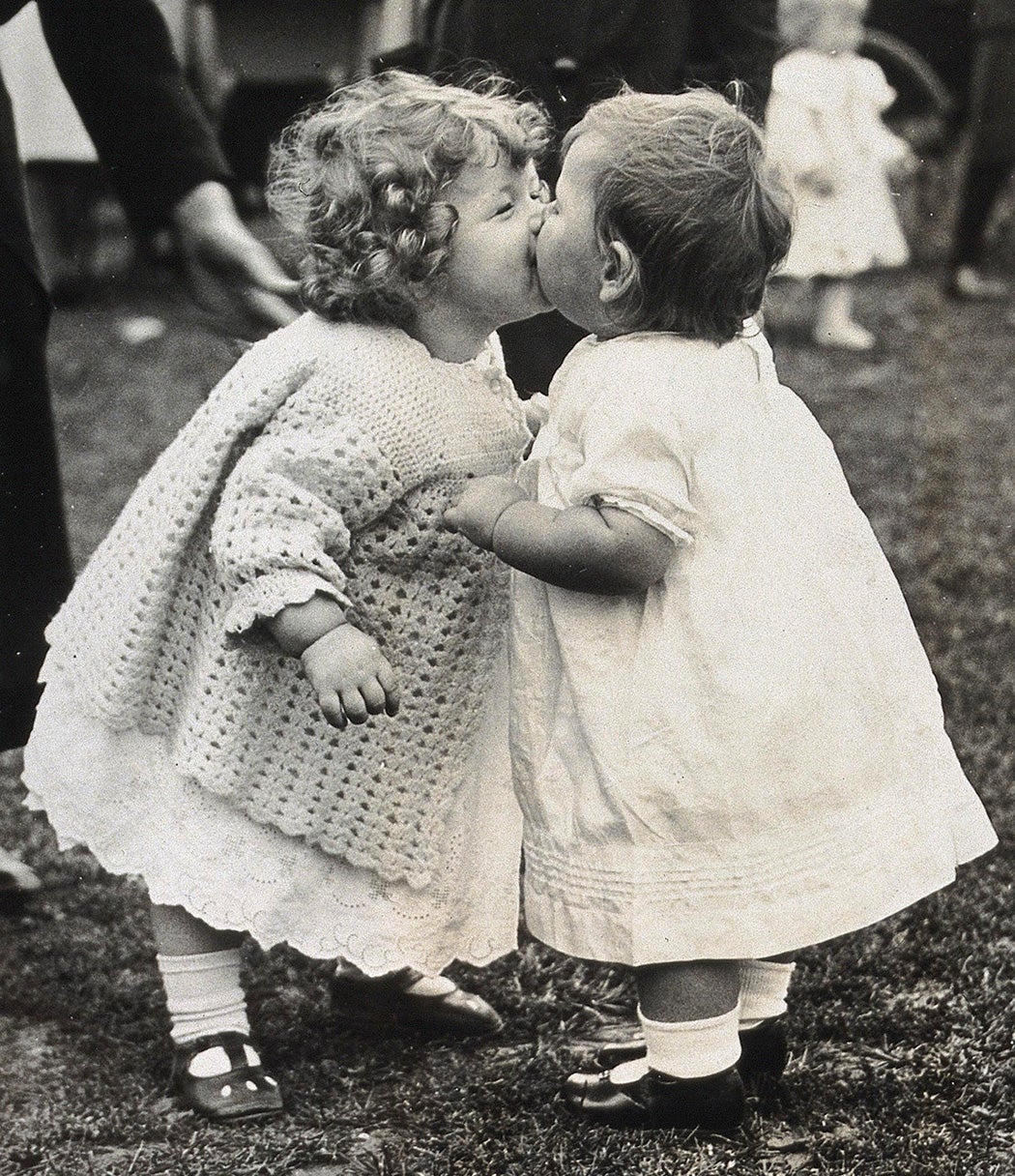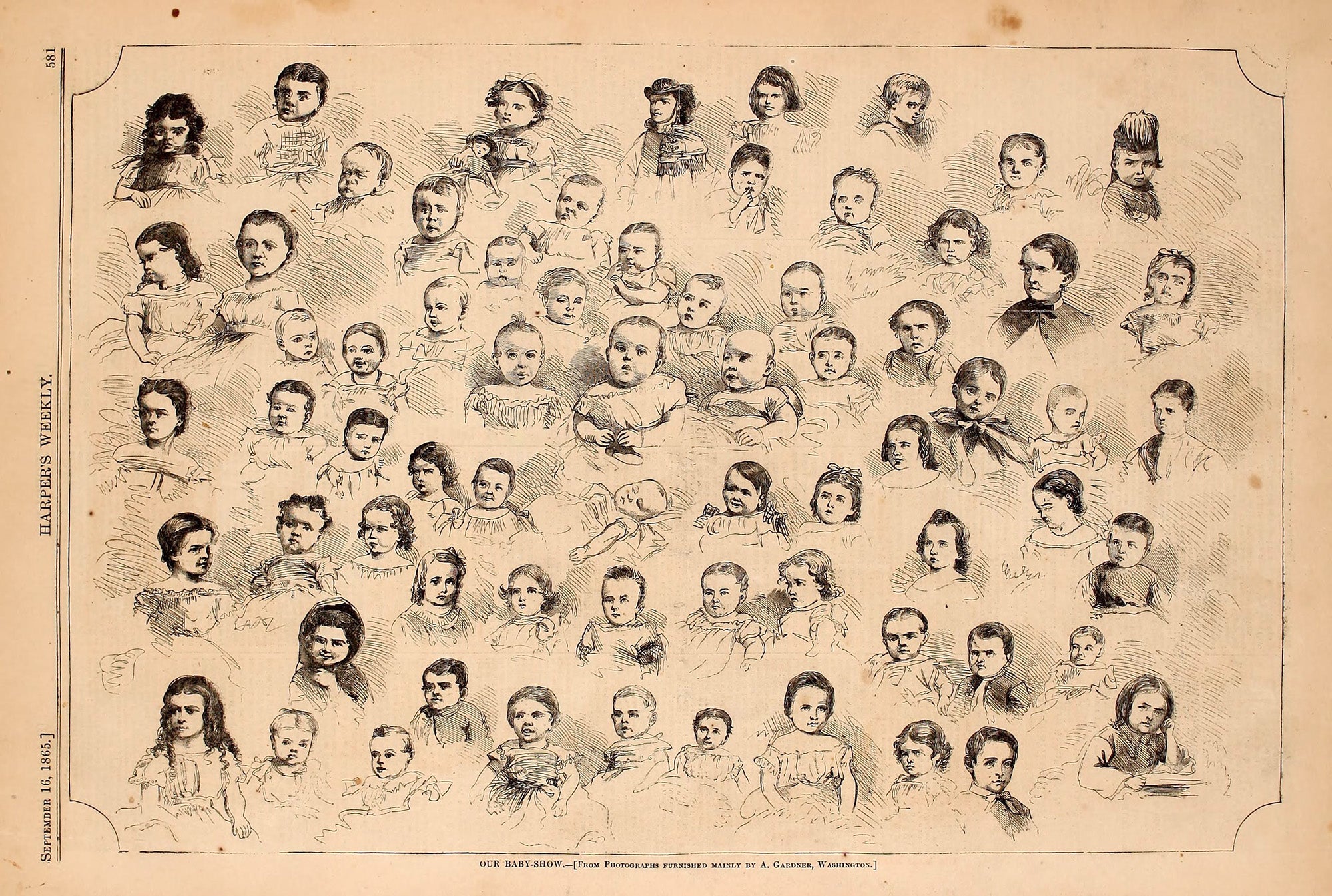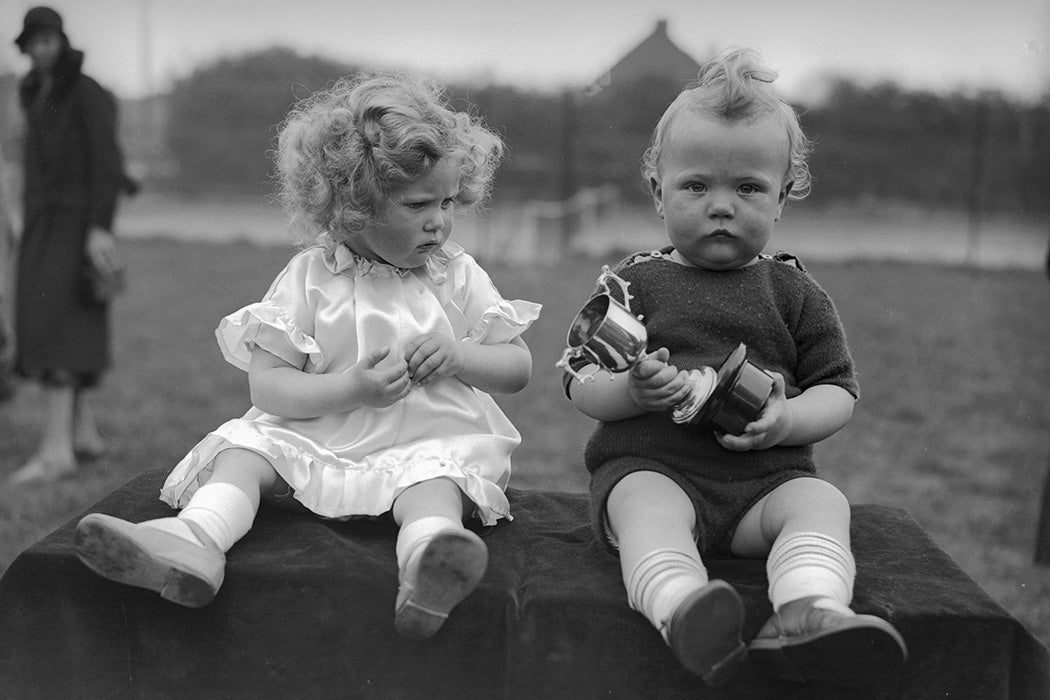Beauty pageants, in all their glamor and controversy, are a familiar part of American culture. We’re accustomed to a range of individuals, from children to women to drag queens, participating in contests on local and global stages. But one of the forgotten antecedents of pageant culture is the nineteenth-century practice of “baby shows,” curated competitions within which families offered their children to be judged as the best, bounciest babies. Though they seemed to have been an unusual entertainment that came from nowhere. According to scholar Susan J. Pearson,
By the end of the century they were a commonplace form of entertainment at both agricultural and mechanics’ fairs, urban theaters, exhibition halls, and fundraising events; and well before women competed for the crown of Miss America there, Atlantic City played host to an annual baby show on its boardwalk.
Pearson traces the origins of American baby shows to an account written by Unitarian minister Theodore Parker, who described a show held to boost attendance at the Clark County Fair in Springfield, Ohio, in 1854. The idea spread rapidly and was catapulted to urban notoriety by P. T. Barnum, who, with his usual flair for innovation by transformation, made a spectacle of baby shows at his American Museum in New York. His first show, in June 1855, drew 60,000 patrons.
The ingredients in a baby show were simple. With the aid of local publicity, a sponsor recruited dozens of mothers to bring their children to compete in superlative categories such as “finest triplet” or “fattest baby.” (While typically called a “baby show,” contestants’ ages ranged from newborn into the elementary-school years, and categories were often divided by age range and sex.) Contests might be judged by local dignitaries, a committee of mothers, physicians, or even the audience itself by crowdsourced voting. The promise of adulation, approval, and a prize of cash or high-end housewares drew eager participation since, as writer and former pageant judge and competitor Elisabeth Blumer Hardy notes in “Pageant Culture, Media, Social Class and Power,” a win could be seen as a path to fame, opportunity, wealth, or social bragging rights.

At first, baby shows were popular entertainment, offered to and sustained by the masses in venues like theaters, church halls, dime museums, and fairgrounds. As commentary from across the Pond suggests, the craze soon extended past the bounds of class: the British Medical Journal noted in 1895 that “there is no reason why little lords should not be appraised for their weight, size, number of teeth etc., in their infancy as well as the babes of Mrs. Jones, of Whitechapel.” A demonstration of maternal pride and the cult of domesticity, baby shows gave patrons the chance to coo and fawn over the beautiful children assumed to be the product of healthy, “proper” homes.
Crowds went absolutely bananas. But questions remained: were baby shows harmless fun? Were the shows elevating childhood to a place of reverence or degrading it with cheap fanfare? Despite widespread baby fever, the shows were not without criticism. Glorification of “true womanhood” and domestic values made baby shows appealing for many folks, but those same traditional values usually emphasized that women belonged in a private sphere; putting family life on public display was tawdry, if not corrupting.

Sometimes the shows emphasized scientific value to make infant exhibition seem edifying as well as amusing. But this raised the specter of eugenics, which was developing as a concept during precisely the era in which these baby shows came to popularity (As Chloe Burke and Christopher Castaneda remind us, “Sir Francis Galton first coined the term eugenics in 1883 as a derivative of the Greek word eugenes meaning “good in birth”). By the early twentieth century, baby shows had been in some venues transmuted into “Better Babies” or even “Fitter Families” contests.
Weekly Newsletter
“Little lords” in Great Britain aside, race and class remained a constant undercurrent. Nineteenth-century definitions of acceptable womanhood generally applied to middle- and upper-class women. Working-class or poor women, immigrant women, and women of color did not have the luxury of confining themselves to a domestic private sphere, and baby shows reinforced this ideal of white family leisure. As Barnum’s baby shows went on the road, a shoemaker named Josiah Bateman organized a competitive “colored baby show” that directly raised questions of race and objectification (in an 1862 article entitled “The Baby Bazaar,” Vanity Fair magazine parodied Barnum and abolitionism all at once). Black baby shows ran the gamut of social response: in some promoters’ hands, they dared to present a version of Black life that was attractive and participatory in mainstream American culture. In others, they were just awful minstrelsy. Critics linked baby shows and slavery in concept, as Pearson writes, “not only because they treated human beings as mere matter, that is to say as animals, but also because, like slavery, the baby shows represented the intrusion of the market into the home.”
Baby shows continued into the twentieth century. A Connecticut legal case in 1918 described the fallout of a planned baby show in Hartford, the cancellation of which due to risk of epidemic disease prevented the awarding of 120 prizes. So, too, did the practice evolve into different entertainments over time, from adult beauty pageantry to concepts like “Dr.” Martin Couney’s use of Coney Island foot traffic to show off and fund his incubator clinic.
Support JSTOR Daily! Join our new membership program on Patreon today.







